
GaWx
-
Posts
11,514 -
Joined
Content Type
Profiles
Blogs
Forums
American Weather
Media Demo
Store
Gallery
Posts posted by GaWx
-
-
Good news from 12Z UKMET but it tends to be conservative:
TROPICAL DEPRESSION 95L ANALYSED POSITION : 15.1N 48.7W
ATCF IDENTIFIER : AL952021
LEAD CENTRAL MAXIMUM WIND
VERIFYING TIME TIME POSITION PRESSURE (MB) SPEED (KNOTS)
-------------- ---- -------- ------------- -------------
1200UTC 13.08.2021 0 15.1N 48.7W 1014 24
0000UTC 14.08.2021 12 CEASED TRACKING -
The amazing early August +PNA event has just ended. There were amazing new records set (records back to 1950):
1. The old record high PNA for any date prior to this event was the 3.40 of 9/24/2008. This was obliterated by a 4.00 on 8/6/21 (right at the top of the chart):
2. This event had four days in a row of a 3+ PNA. This is amazing because during the prior 71 years, there was only one time that there were as many as two days in a row (Sep of 2008)!
3. This event had 6 days of 2.75+, easily exceeding the previous event record of 3 days set several times.
4. So, this event is by far the greatest +PNA event in terms of magnitude during the 71 years of recorded history. Could this have been a once in several hundred+ year event? Quite possibly.
5. Not surprisingly, this event occurred during the July-early Oct period (see my earlier post on this). All six PNA events on record with a peak of 3+ occurred during the July-Sep period. For whatever reason, very strong PNA events like to occur at this time of year. In contrast, met winter has had only three days of 2+ (highest 2.35) and those were in very late Feb of two Febs (1968 and 1983).
Link to thread following this as it was happening:
-
The main cluster of stronger 12Z Euro ensemble members crosses S FL and then goes into the NE Gulf. This is followed by a move into the FL Panhandle and then into AL or W GA. A secondary cluster largely misses FL barely to the east or skims it followed by a N movement and landfall anywhere from SAV to ILM.
-
 1
1
-
-
30 minutes ago, Jessy89 said:
See what happens but some of these winter forecast are quite outrageous. Some are calling for a lot more winter like weather in the southeast. That in which looks sorta like a El Niño type of winter
.Hey Jessy,
Based on the current drop in SSTs, the cooling subsurface, the forecast models, solidly positive 30 and 90 day SOI averages, +OLR, and the fact that we're already into August, I see very little chance for El Nino by winter despite my preference for it.
Check out this animation showing significant recooling:
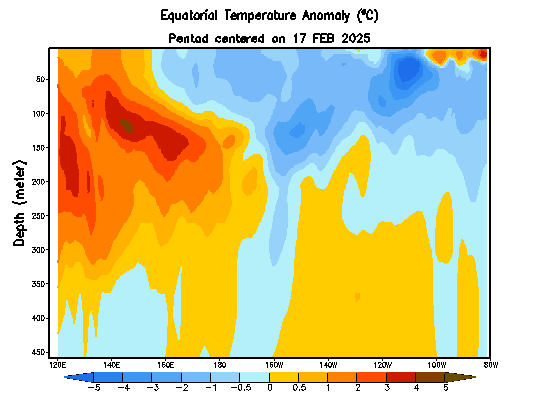
SOI: https://www.longpaddock.qld.gov.au/soi/
OLR: https://www.cpc.ncep.noaa.gov/data/indices/olr
-
 4
4
-
 1
1
-
-
0Z UKMET does develop 94L into a TD in the NE Caribbean Tuesday and takes it to just SE of S FL at 144 hours moving WNW (end of run) but it never gets stronger than TD. The UKMET fwiw can be conservatively weak. So, we’ll see. The Euro, GFS, and CMC are pretty similarly weak and also suggest it will move toward S FL. This is just guidance.
NEW TROPICAL CYCLONE FORECAST TO DEVELOP AFTER 60 HOURS
FORECAST POSITION AT T+ 60 : 17.3N 63.3W
LEAD CENTRAL MAXIMUM WIND
VERIFYING TIME TIME POSITION PRESSURE (MB) SPEED (KNOTS)
-------------- ---- -------- ------------- -------------
1200UTC 10.08.2021 60 17.3N 63.3W 1013 28
0000UTC 11.08.2021 72 18.7N 66.3W 1012 27
1200UTC 11.08.2021 84 19.6N 69.0W 1011 28
0000UTC 12.08.2021 96 20.7N 71.5W 1011 29
1200UTC 12.08.2021 108 21.7N 74.0W 1012 26
0000UTC 13.08.2021 120 22.4N 76.2W 1012 25
1200UTC 13.08.2021 132 23.2N 78.0W 1013 22
0000UTC 14.08.2021 144 23.9N 80.0W 1013 26
———————————————
Regardless of development, progged steering suggests this may very well cause an increase in rainfall over parts of FL/SE US by early next week.
-
 1
1
-
-
Today, we got one last 3+ with a 3.40. That makes four 3+ days in a row. This is amazing because during the prior 71 years, there was only one time that there were as many as two days in a row! So, this event is by far the greatest +PNA in the 71 years of recorded history. Could this have been a once in several hundred+ year event? Quite possibly.
-
 1
1
-
-
3 hours ago, StormchaserChuck! said:
Good post, something to track, but nothing is showing up in the 500mb.
Thanks, Chuck. We got an even higher PNA of 4.00 today (smack dab at the top of the chart), which absolutely obliterates the previous all-time old record peak for any date back to 1950 of 3.40!! This also makes it three days of 3+ for this event, which breaks the previous record of two days in 2008, and we may even get one more tomorrow:
Yeah, I have noticed that despite this record high PNA today, the 500 mb pattern today doesn't look nearly as impressive to the eye as prior days. To be sure, the W NA ridge/E NA trof was quite impressive for summer/most impressive to me on August 2, when the PNA was "only" at 2.88:
However, today's H5 on the day of the PNA peak is already much flatter:
It is almost as if there's a lag in the daily PNA calculation. So, nothing is showing up of note now at h5 but it was showing up impressively a few days ago.
-
-
-
Aug 2nd update:
Today's PNA didn't quite make it to 3 as it was 2.88. Even so, it's the highest in 12 years and the fun is just starting. Today's GEFS forecast, if anything, is for a slightly higher peak than the prior run had meaning it is still calling for a new all-time record high. It is forecasting 3+ for 8/3-6 with a close call for 8/7. So it is calling for 4-5 days of 3+. The current record for any one peak is only 2 days of 3+ (records back to 1950) , which was in Sep of 2008. So, this would shatter that record!
-
To give me a feel for the PNA trends, I looked at the monthly data since 1950, which is shown here:
https://www.cpc.ncep.noaa.gov/products/precip/CWlink/pna/norm.pna.monthly.b5001.current.ascii.table
I also looked at this site, which is great because it uses the same data (completed through Feb of 2019) while also showing the yearly and monthly averages as well as using color coding to make it easier to see trends:
https://www.daculaweather.com/4_pna_index.php
Looking at the trends:
1. Average annual by decade (2010s includes 2020's +0.21):
1950s: -0.07
1960s: -0.03
1970s: -0.11
1980s: +0.15
1990s: +0.07
2000s: +0.19
2010s: +0.16
This tells me the trend was fairly flat from the 1950s to the 1970s. Then there was a pretty sharp increase from the 1970s to the 1980s. However, although the sharp 1980s increase has held, it actually has been pretty flat overall since as the 2010s were about the same as the 1980s.
Now when looking at the last 7 years, alone, they have all been positive. This is the first time since 1950 to have 7 positive years in a row and they've averaged +0.24. However, way back during 1977-1983, those 7 years averaged about the same at +0.23. Also, the highest 7 year average was the +0.34 of 2004-10. Furthermore, the first half of 2021 is the 3rd most most negative since 2000. Even with August likely ending up strongly positive (at least close to +1 and probably a good bit higher), Jan-Aug will likely still average negative and the odds are that 2021 will remain negative considering no El Nino. So, that 7 year positive streak has a good chance to end in 2021.
2. Next I looked at the trend for each month and found some interesting things:
Jan: After averaging negative in the 1950s-70s, it skyrocketed to +0.78 in the 1980s, came back down but remained solidly positive in the 1990s and 2000s, and then went back up to +0.78 in the 2010s.
Feb: also rose pretty sharply in the 1980s to +0.44, fell to neutral in the 1990s, followed by a rise back to 0.30 in the 2000s, and then followed by a fall back to neutral. So, certainly no positive trend since the 1980s.
Mar: similarly rose to +0.41 in the 1980s but like Feb has fallen back to neutral in the 2010s.
Apr: similarly rose to +0.37 in the 1980s but fell back to -0.25 in the 2010s.
May: neutral in the 1980s, rose to +0.25 in the 1990s, but has since plunged to -0.48 in the 2010s.
Jun: rose to +0.46 in the 1980s, dropped sharply to neutral in the 1990s and then -0.57 in the 2000s, but then rose sharply back to neutral in the 2010s.
Jul: rose to +0.20 in the 1980s and has been solidly positive and rising significantly since with +0.70 in the 2010s.
Aug: was unusual with it falling to -0.57 in the 1980s but then followed by sharp rises to neutral in the 1990s, +0.42 in the 2000s, and +0.67 in the 2010s.
Sep: like Aug it plunged to -0.50 in the 1980s followed by sharp rise to -0.13 in the 1990s, +0.65 in the 2000s, and then a slight drop to a still solid +0.47 in the 2010s.
Oct: neutral in the 1980s, then fell to -0.37 in the 1990s, rose to neutral in the 1990s/2000s, and +0.25 in the 2010s.
Nov: rose to +0.30 in the 1980s, dropped to -0.17 in the 1990s, rose to +0.18 in the 2000s, and then plunged to -0.32 in the 2010s.
Dec: rose to +0.35 in the 1980s, dropped to neutral in the 1990s, skyrocketed to +0.68 in the 2000s, and then plunged back to +0.12 in the 2010s.
So, my analysis by month shows that Jul-Oct were the months that suggest a rising trend since the 1980s with Jan and Jul-Sep impressively positive in the 2010s. However, the 2010s for Feb-Jun and Nov have fallen a good bit below their respective 1980s levels. So, there are very mixed messages regarding the trend since the 1980s depending on the season. Mid summer through early to mid autumn has risen substantially since the 1980s while late winter through early summer has done the opposite. Does anyone have a feel for why there are these opposing seasonal trends? I'll note that mid summer through early autumn is when SSTs max out. Would there be any connection between that and the sharp rise in the PNA then? If so, why?
From the paper bluewave quoted from: "This trend is particularly strong for the summertime PNA during the period 1979–2016 (0.27 per decade, p < 0.01), with the pattern shifting from a negative phase in the 1980s through the mid-1990s to a strong positive phase after the mid-1990s (Fig. 1c)."
--------------------------------------------------------------
Regarding the summer, I noted that July and August both showed large increases since the 1980s and that Aug averaged solidly negative in the 1980s followed by a sharp rise. However, June and July both averaged positive during the 1980s making for an overall neutral JJA then (about half the years positive and the other half negative). Also, I have JJA averaging pretty much neutral during the 1990-1996 period (only very slightly negative). So, I don't see why it refers to a negative phase in the 1980s through mid 1990s for the summer. I'd call it neutral. But I do agree with calling it a strong positive phase after the mid 1990s thanks solely to Jul and Aug.
-
Today’s PNA started the very sharp rise as has been forecasted by the GEFS for days although it didn’t quite reach 2 with it at 1.67 vs yesterday’s 0.51.
Today’s GEFS PNA forecast peak (see below) is even higher than the last 3 days. It implies a higher chance to exceed the daily record high of 3.397 (records back to 1950), which was set on 9/24/2008! Moreover, it suggests an even better chance to exceed the current record of two days at 3+ during one peak, which was set 9/23-24/2008.
Today’s GEFS suggests a good chance for it to exceed 3 tomorrow. It still has a slight fall for 8/3 and then near steady on 8/4 although both may barely remain at 3+ (will be close). Then, it still has a second rise, which is even more prominent than the prior forecasts. It has it easily above 3 on 8/5-6 with a new record high peak above 3.397 quite possibly being set on one or both days! It is suggesting over 3.5 on both days! Then it falls some on 8/7 although it may still be at 3+ for the last time. Afterward there is a sharp fall 8/8+.
So, today’s forecast suggests not just a good shot at a new record high peak but also a very good shot at a new record high # of days at 3+ with as many as six days during 8/2-7, which would absolutely obliterate the current record (back to 1950) of Sep of 2008’s two days at 3+!
-
3 hours ago, donsutherland1 said:
Sorry, I hadn’t seen this post. GaWx provided the numbers.
Today's GEFS is actually slightly stronger. So that I don't clutter this excellent thread up with more posts on this very strong upcoming +PNA being that there is no clear-cut indication that it is related to CC, I decided to create a thread here to cover it:
-
The GEFS runs of the last few days have been predicting an unusually strong +PNA coming up in early August. Here's today's GEFS PNA forecast, which if anything is a bit stronger overall:
Based on this forecast, the PNA is going to skyrocket the next 2 days and approach, if not reach, 2 tomorrow (8/1) and approach, if not reach, 3 on 8/2. Afterward, the mean suggests it will quite possibly drop slightly on 8/3 before probably rising again some. It is projected to be 2+ anywhere from 6 to 8 days within 8/1-8 with 8/2-7 very likely being 2+. Also, it is projected to be 2.5+ anywhere from 4 to 6 days within 8/2-7 with 8/3-6 having a good chance to be 2.5+. There quite possibly will be several days over 3 within 8/2-6.
The largest # of days on record at 3+ back to 1950 for any one peak is only two, which occurred 9/23/08 and 9/24/08. The two days of 3+ could be matched and maybe even exceeded. The highest PNA on record is 3.397 from 9/24/2008. It will probably get pretty close to that with some chance to even exceed it. There have been only four other peaks on record with a 3+: 8/1/2009, 7/2/1982, 9/28/1979, and 9/30/1959. So, interestingly enough, three of the five peaks at 3+ were within Sept 24-30 and all 6 were during JAS. Thus, the upcoming peak in early Aug is sort of in line with very strong peak climo.
Now check out the peak dates for the 11 recorded peaks of 2.5+:
7/2, 7/14, 8/1, 9/24, 9/24, 9/26, 9/28, 9/30, 9/30, 10/4, and 10/6
Note how they're so concentrated within 9/24-10/6 with 8 of the 11 within that 13 day period! I'd love to know the reason.
The largest # of days in a row on record of 2.5+ is six (9/22-27/2008). That run of six at 2.5+ has a chance to be matched.
The largest # of days in a row on record of 2.0+ is eight (6/27-7/4/1982 and 9/27-10/4/1979). These runs of eight days at 2.0+ have some chance to be matched though that would very likely require it to reach 2 tomorrow. After these, the next longest are 7 days (9/22-28/2008 and 10/5-11/1953).
Here are the number of recorded periods with peaks of 2+ by month:
Jan 0
Feb 2
Mar 0
Apr 2
May 2
Jun 7
Jul 7
Aug 12
Sep 16
Oct 10
Nov 1
Dec 0
So, since 1950, there were only 7 peaks of 2+ during Nov-May or once every 10 years with the highest being only 2.353! Only 2 of the 72 DJFs had one and they were both in very late Feb: 2/29/68 and 2/28/83. OTOH, a whopping 38 of the 59 occurred during ASO with all 10 in Oct during Oct 1-12!
Source for daily PNA back to 1950: ftp://ftp.cpc.ncep.noaa.gov/cwlinks/norm.daily.pna.index.b500101.current.ascii
-
 1
1
-
-
14 hours ago, GaWx said:
I'm not Don but I follow the indices closely. Assuming the forecast verifies pretty well, which is highly likely this close based on GEFS PNA forecasts having done quite well, the upcoming peak would be highly anomalous though not really all that extraordinary because ASO strongly + peaks occur much more often for some reason than during other months as you'll see below. And that's nothing new. I'd love to know the reason! (Aside: So, there's really no clear-cut evidence to connect this to AGW/CC imo. I'm mentioning this only because this is a CC thread).
The GEFS is suggesting a high chance at a peak of 2.8+ in early Aug. Since 1950, there have been only 6 peaks of 2.8+:
- 3.397 09/24/08
- 3.328 07/02/82
- 3.160 08/01/09
- 3.142 09/28/79
- 3.112 09/30/59
- 2.965 09/26/02
So, the last one was 12 years ago. Note that all 6 occurred during JAS meaning the upcoming early Aug peak fits in fairly well with this climo. Interestingly though, 4 of the 6 were within the tiny interval of the last week of Sep!
Since 1950, there have been this many peaks by month of 2+ adding to a total of 59 peaks or ~once per year:
Jan 0
Feb 2
Mar 0
Apr 2
May 2
Jun 7
Jul 7
Aug 12
Sep 16
Oct 10
Nov 1
Dec 0
So, since 1950, there were only 7 peaks of 2+ during Nov-May or once every 10 years with the highest being only 2.353! Only 2 of the 72 DJFs had one and they were both in very late Feb: 2/29/68 and 2/28/83. OTOH, a whopping 38 of the 59 (~2/3) occurred during ASO with all 10 in Oct during Oct 1-12!
Source for daily PNA: ftp://ftp.cpc.ncep.noaa.gov/cwlinks/norm.daily.pna.index.b500101.current.ascii
7/29/21 GEFS PNA forecast:
To followup, here’s today’s GEFS PNA forecast, which is very similarly suggesting a near +3 within the first few days of August: -
On 7/26/2021 at 1:10 PM, Typhoon Tip said:
I'm not Don but I follow the indices closely. Assuming the forecast verifies pretty well, which is highly likely this close based on GEFS PNA forecasts having done quite well, the upcoming peak would be highly anomalous though not really all that extraordinary because ASO strongly + peaks occur much more often for some reason than during other months as you'll see below. And that's nothing new. I'd love to know the reason! (Aside: So, there's really no clear-cut evidence to connect this to AGW/CC imo. I'm mentioning this only because this is a CC thread).
The GEFS is suggesting a high chance at a peak of 2.8+ in early Aug. Since 1950, there have been only 6 peaks of 2.8+:
- 3.397 09/24/08
- 3.328 07/02/82
- 3.160 08/01/09
- 3.142 09/28/79
- 3.112 09/30/59
- 2.965 09/26/02
So, the last one was 12 years ago. Note that all 6 occurred during JAS meaning the upcoming early Aug peak fits in fairly well with this climo. Interestingly though, 4 of the 6 were within the tiny interval of the last week of Sep!
Since 1950, there have been this many peaks by month of 2+ adding to a total of 59 peaks or ~once per year:
Jan 0
Feb 2
Mar 0
Apr 2
May 2
Jun 7
Jul 7
Aug 12
Sep 16
Oct 10
Nov 1
Dec 0
So, since 1950, there were only 7 peaks of 2+ during Nov-May or once every 10 years with the highest being only 2.353! Only 2 of the 72 DJFs had one and they were both in very late Feb: 2/29/68 and 2/28/83. OTOH, a whopping 38 of the 59 (~2/3) occurred during ASO with all 10 in Oct during Oct 1-12!
Source for daily PNA: ftp://ftp.cpc.ncep.noaa.gov/cwlinks/norm.daily.pna.index.b500101.current.ascii
7/29/21 GEFS PNA forecast:
-
 1
1
-
-
For those who like it hot all of the time in summer, you're probably not going to like how the last two GEFS runs (including 12Z) look after Saturday as they're significantly cooler in the E US from then on vs prior runs.
-
 1
1
-
-
Invest 90L may have fizzled in terms of TD potential (fine with me), but it is still having a significant impact on the GA coast with bands of moderate to heavy rains coming off the ocean, including at my place right now. This is the 4th tropical entity to do so here and we’re still in July!
-
 1
1
-
-
36 minutes ago, gtg947h said:
Agreed. Getting tired of the rain though...
I've gotten ~8.50" MTD, which is double the normal, with about half from Elsa. No lawn irrigation needed anytime soon. Western Chatham, including KSAV, has gotten a good bit less though still ample amounts. Some areas of especially Skidaway Island have gotten over 10" MTD!
The rainfall is protecting us and much of GA and the SC Lowcountry nicely from any heatwaves for at least now. That's a blessing despite some areas of the SE getting their hottest for the YTD later this week.
-
This one, Invest 90L, could turn out to be the 4th tropical system to impact this area and it is still July! If there's going to be impact here, this is how I like them, weak!
-
 3
3
-
-
4 hours ago, LiQuiDBuD said:
A large percentage of the country above average, says 10-15 degrees above. Most of the southeast except for the coastal areas. Yay.
Yeah, it says:
"Early estimates indicate that most of the contiguous United States will see highs running 10 to 15 degrees above average."
However, the reality/good news is that the SE will not have the hottest highs anywhere near 10-15 AN and will instead be more like ~5 F AN thanks to enough soil moisture providing us protection. So, yes the hottest of the season to date appears likely for many in the SE , but nothing we can't handle as no heatwave is expected.
KATL had only its 8th 90+ YTD today, which is well below normal for this date. However, they appear to have a string of low to mid 90s on the way.
-
 4
4
-
-
Raining again here early this afternoon keeping the soil moisture very moist and protecting us from any heatwave anytime soon.
-
Another beneficial thunderstorm here early this afternoon with nice rains of at least 1/4". Near 8" for the MTD. We've got a decent shot at a 10"+ month here! We don't see those all that often unless there's a TC involved, which there was (Elsa).Further west in western Chatham county including the airport, there has been much less though still somewhat above normal of over 4" MTD.Edit: My total from that storm ended up near 0.45". There is thunder again and a 2nd storm appears on the doorstep.
-
32 minutes ago, Awesomesauce81 said:
Yeah I was working at the Port when the storms came. With lightning being so close we had to stop working for about an hour.
Greetings, it is "awesome" to see a fellow SAV area poster as there aren't many of us on the various boards!
In my area further south than you, there was a good soaking from the warned storm giving us nearly 1". That gets my total MTD to nearly 8", which is way higher than normal thanks largely to Elsa. KSAV, itself, has had much less at just over 4" MTD including today. But even that is slightly wetter than normal.
There was nothing severe nor any closeby CTG lightning from today's storm at my location.
-
 1
1
-

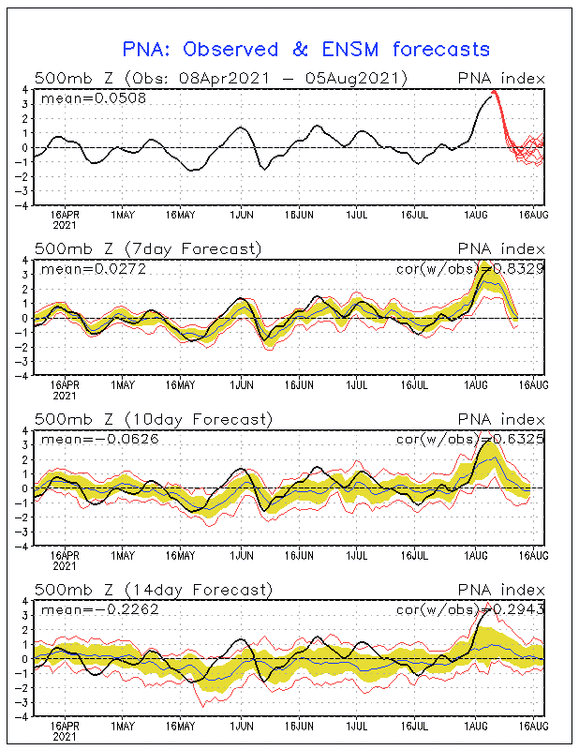
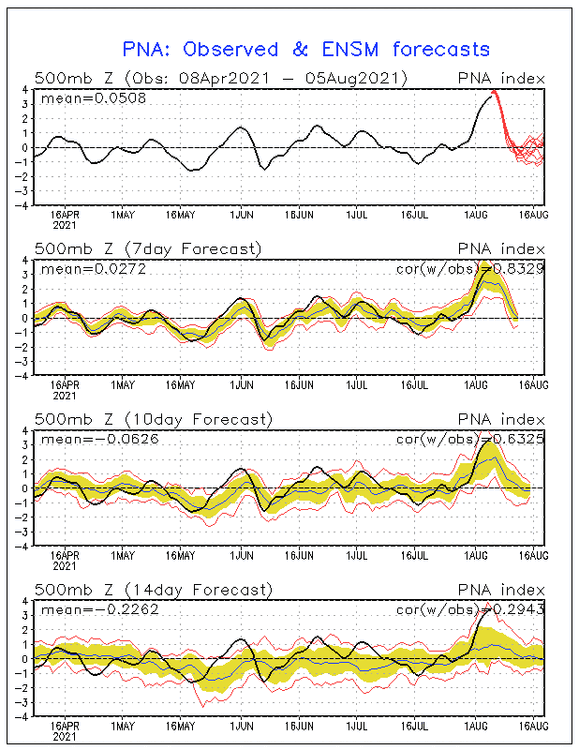
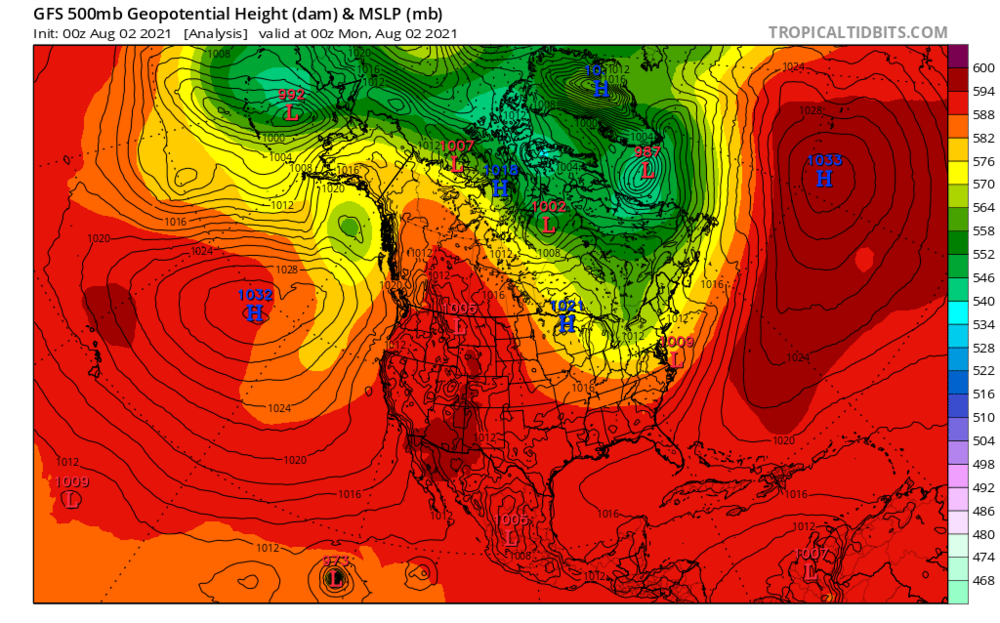
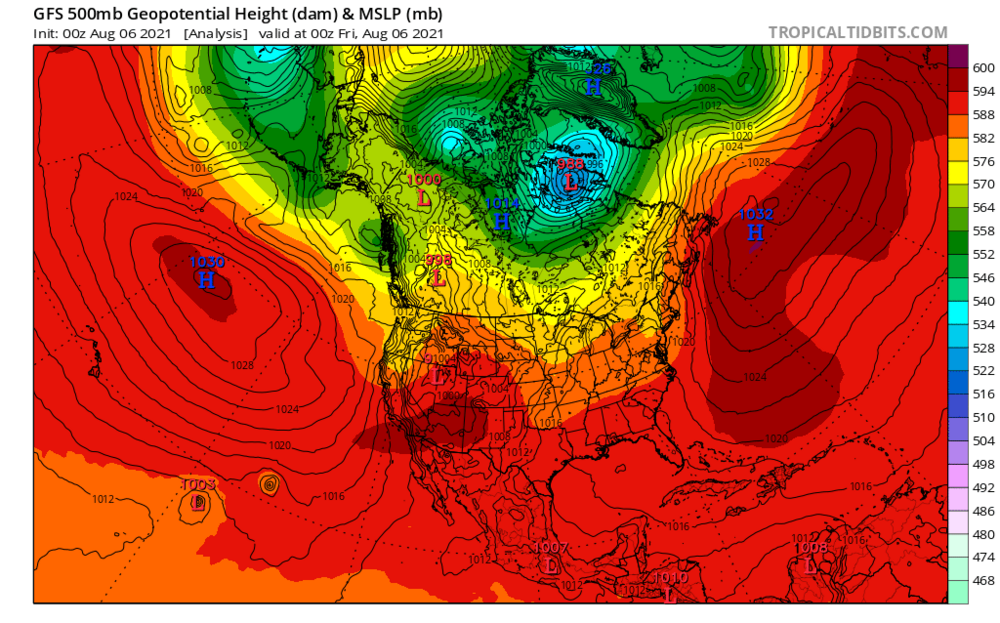
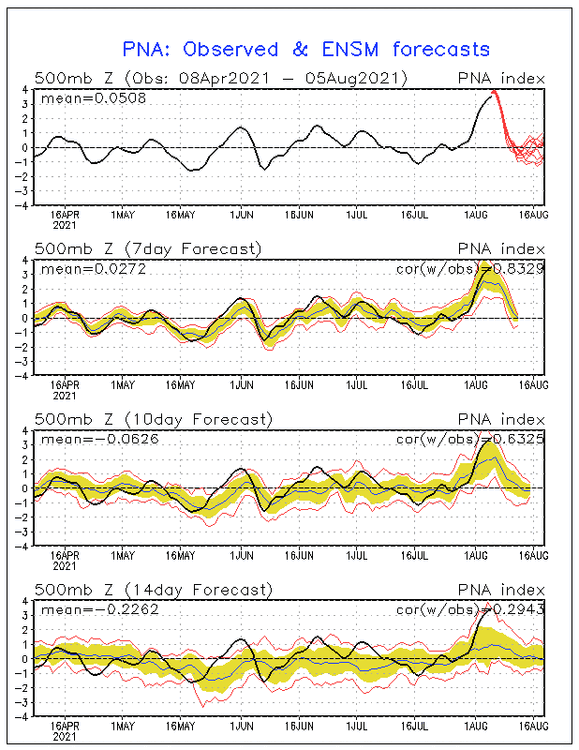
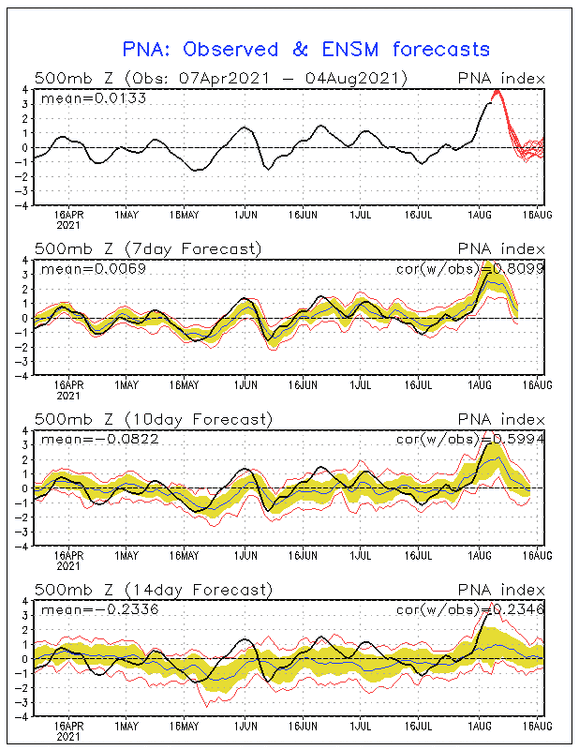
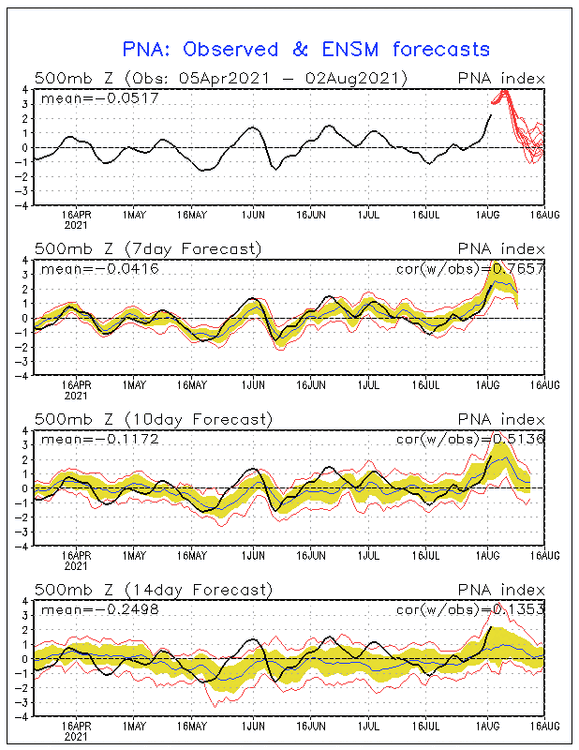
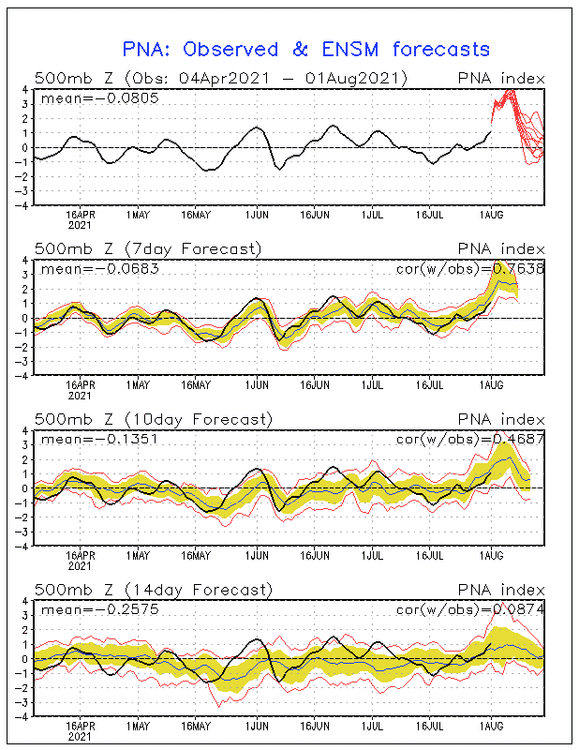
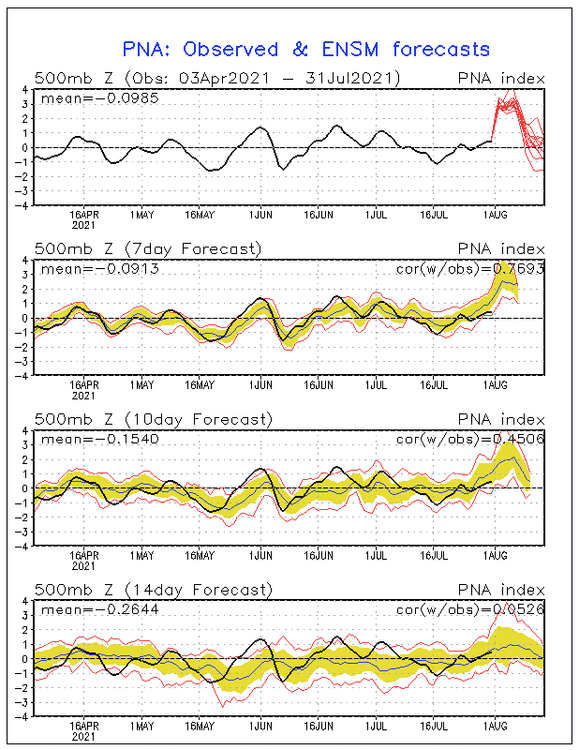
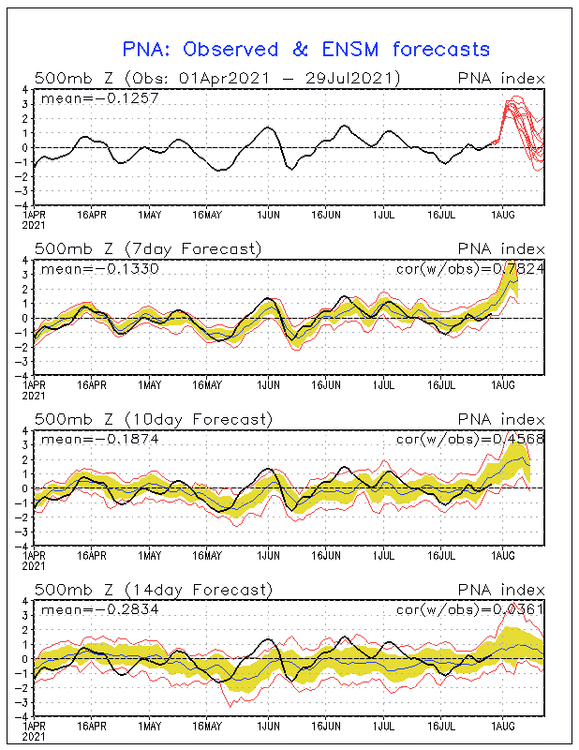

Major Hurricane Grace
in Tropical Headquarters
Posted
The 12Z GFS ens fortunately has only one strong member out of the ~31 members. It goes from Bahamas to FL Straits to E GOM to US gulf landfall.